- Maximizing Your Strawberry Harvest
- Before Flowering
- After Harvest
- Tips for Feeding Strawberries Before Flowering
- 1. Choose the right fertilizer
- 2. Apply the fertilizer at the right time
- 3. Use organic alternatives
- 4. Avoid overfeeding
- 5. Monitor soil moisture
- Advice on Feeding Strawberries After Harvest
- 1. Remove Old Leaves
- 2. Apply a Balanced Fertilizer
- 3. Water Regularly
- 4. Mulch the Plants
- 5. Monitor and Treat Pests and Diseases
- 6. Provide Adequate Sunlight
- 7. Plan for Next Season
- Question-answer:
- When is the best time to feed strawberry plants?
- What should I feed my strawberry plants with before flowering?
- What type of fertilizer should I use to feed my strawberry plants?
- How often should I feed my strawberry plants after harvest?
- Can I use organic fertilizers to feed my strawberry plants?
- What are the benefits of feeding strawberry plants after harvest?
- Video: When is the Best Time to Harvest Cabbage
Strawberries are a delicious and nutritious fruit that can be easily grown in your own backyard. However, to ensure a bountiful harvest, it is important to properly feed your strawberry plants. There are specific feeding techniques that should be followed both before flowering and after harvest to maximize the growth and yield of your strawberries.
Before flowering
Feeding your strawberry plants before they begin to flower is crucial for promoting healthy growth and strong root development. During this stage, it is recommended to provide a balanced fertilizer with equal amounts of nitrogen, phosphorus, and potassium. This will help the plants establish a solid foundation and produce sturdy, productive plants.
In addition to a balanced fertilizer, it is important to ensure that your strawberry plants receive enough water and sunlight. Strawberries thrive in well-drained soil, so make sure to water them consistently, but avoid overwatering. Providing at least 6-8 hours of direct sunlight each day will also help your plants grow strong and produce the maximum amount of fruit.
After harvest
Once you have enjoyed the delicious fruits of your labor, it is important to continue feeding your strawberry plants to ensure a healthy future harvest. After harvesting, it is recommended to switch to a fertilizer with a higher phosphorus content. Phosphorus is essential for promoting fruit production and root growth.
In addition to fertilizing, it is important to remove any dead or damaged leaves and runners to promote air circulation and prevent disease. Regularly check for pests and treat accordingly to ensure that your plants remain healthy and productive. With proper care and feeding, your strawberry plants will continue to provide you with tasty fruits for years to come.
Conclusion
Feeding your strawberry plants “before flowering” and “after harvest” is essential for maximizing your strawberry harvest. By providing the right nutrients at the right time, you can ensure the health and productivity of your strawberry plants. Remember to use a balanced fertilizer before flowering and switch to a higher phosphorus fertilizer after harvest. Additionally, pay attention to watering, sunlight, and pest control to keep your plants thriving. With these feeding tips, you can enjoy a bountiful strawberry harvest year after year.
Maximizing Your Strawberry Harvest
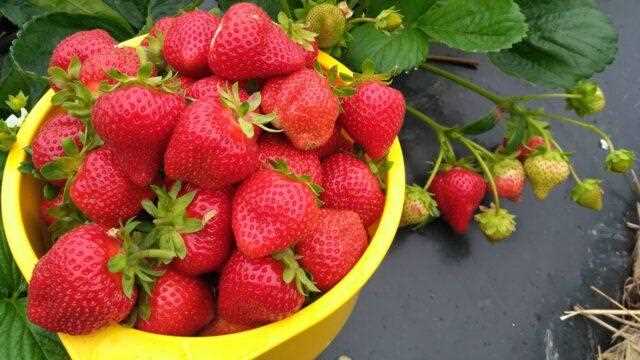
Before Flowering
- Choose the right site: Select a sunny location with well-drained soil for your strawberry plants.
- Prepare the soil: Prior to planting, amend the soil with organic matter such as compost to improve its structure and fertility.
- Planting: Plant your strawberry plants in raised beds or mounds to ensure good drainage, and space them properly according to the variety you’re growing.
- Watering: Water the plants regularly, especially during dry spells, keeping the soil moderately moist but not waterlogged.
- Fertilizing: Apply a balanced fertilizer before flowering to promote healthy plant growth and fruit development.
- Weed control: Keep the planting area weed-free to prevent competition for nutrients and moisture.
After Harvest
- Remove runners: Strawberry plants produce runners, which are small plants that can divert energy from fruit production. After the harvest, trim off these runners to focus the plant’s resources on fruit production.
- Pruning: Trim off any damaged or dead foliage to maintain a clean and healthy plant.
- Watering: Continue to water the plants regularly, but reduce the frequency slightly after harvest to prevent over-watering.
- Fertilizing: Apply a high-potassium fertilizer after harvest to promote root growth and prepare the plants for the winter months.
- Renovation: In late summer or early autumn, remove old, non-productive plants and thin out the remaining ones to allow for better air circulation and light penetration.
- Mulching: Apply a layer of straw or mulch around the plants to protect the crowns, conserve moisture, and suppress weed growth.
- Winter protection: Cover the plants with straw or protective row covers to insulate them during cold winter months.
By following these tips, you can maximize your strawberry harvest and enjoy an abundant crop of juicy, sweet strawberries!
Tips for Feeding Strawberries Before Flowering
Strawberries are delicate plants that require proper nutrition to produce a healthy and abundant harvest. Feeding your strawberry plants before flowering is crucial for promoting strong root development and ensuring they have the necessary nutrients to produce blossoms and fruit. Here are some tips for feeding strawberries before flowering:
1. Choose the right fertilizer
Before flowering, it’s important to provide your strawberry plants with a balanced fertilizer that is rich in nitrogen. Nitrogen promotes healthy leaf and stem growth, which is vital for the plant’s overall health and ability to produce flowers. Look for a fertilizer with a higher nitrogen content, such as a 10-10-10 or 12-12-12 formula.
2. Apply the fertilizer at the right time
It’s best to apply the fertilizer to your strawberry plants a few weeks before they are expected to bloom. This will give the plants enough time to absorb the nutrients and prepare for flower development. Be sure to follow the instructions on the fertilizer packaging for proper application rates and methods.
3. Use organic alternatives
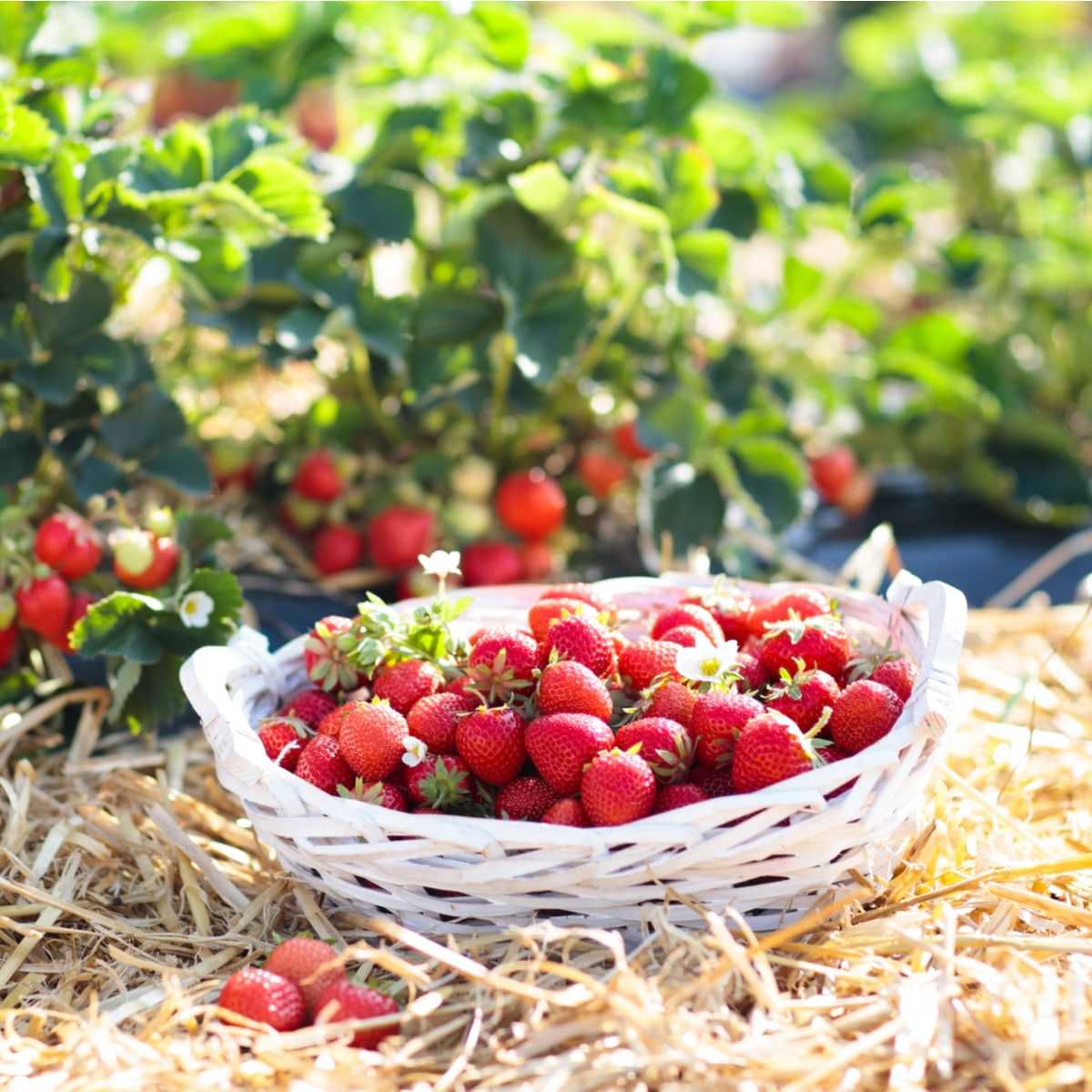
If you prefer organic gardening methods, there are several natural alternatives to synthetic fertilizers that can provide the necessary nutrients to your strawberry plants. Compost, worm castings, and well-rotted manure are excellent choices for feeding strawberries before flowering. These organic amendments not only supply essential nutrients but also improve soil structure and enhance overall plant health.
4. Avoid overfeeding
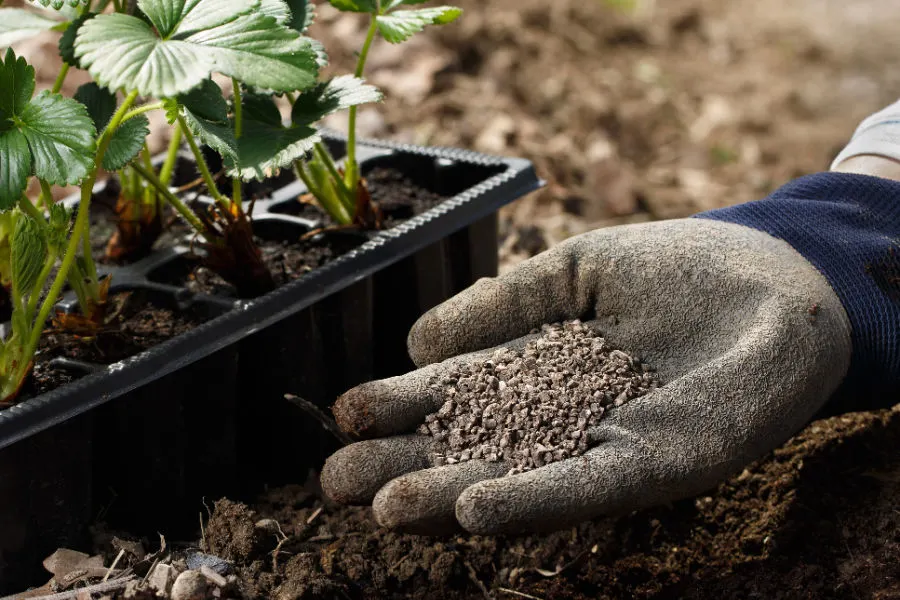
While it’s essential to feed your strawberry plants to ensure healthy growth, it’s equally important not to overfeed them. Excessive fertilizer application can lead to excessive vegetative growth at the expense of flower and fruit production. Follow the recommended dosage and avoid applying fertilizer too frequently or in high concentrations.
5. Monitor soil moisture
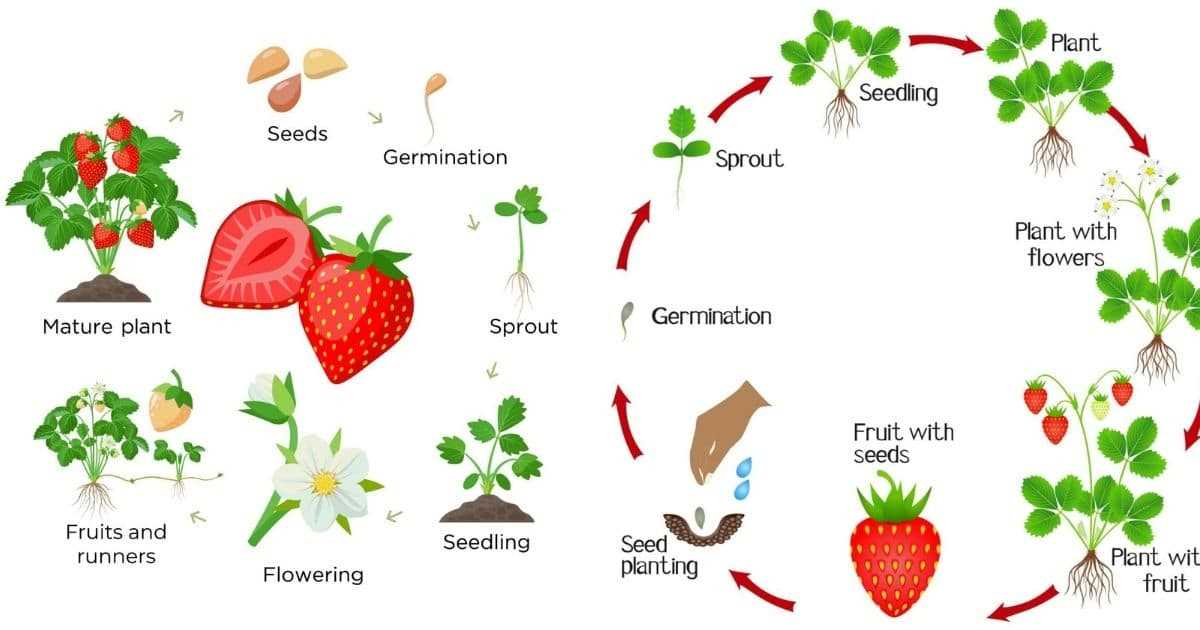
Proper watering is essential for nutrient uptake in strawberry plants. Before applying fertilizer, ensure that the soil is adequately moist but not waterlogged. Overly wet conditions can lead to nutrient leaching and root rot. Regularly monitor the soil moisture levels and adjust watering accordingly to ensure optimal plant health.
By following these tips for feeding strawberries before flowering, you can provide your plants with the essential nutrients they need to develop strong roots and produce abundant flowers and fruits. Remember to always read and follow the instructions on fertilizer packaging and monitor your plants’ needs to ensure they thrive throughout the growing season.
Advice on Feeding Strawberries After Harvest
The harvest season for strawberries may be over, but that doesn’t mean your job as a strawberry grower is done. After the harvest, it is important to continue feeding your strawberries to ensure their health and productivity for future growing seasons. Here are some tips on feeding strawberries after harvest:
1. Remove Old Leaves
After harvesting the strawberries, it is important to remove any old or diseased leaves from the plants. These leaves can harbor pests and diseases that can affect the new growth. Removing these leaves will help promote healthy new growth and prevent the spread of pests and diseases.
2. Apply a Balanced Fertilizer
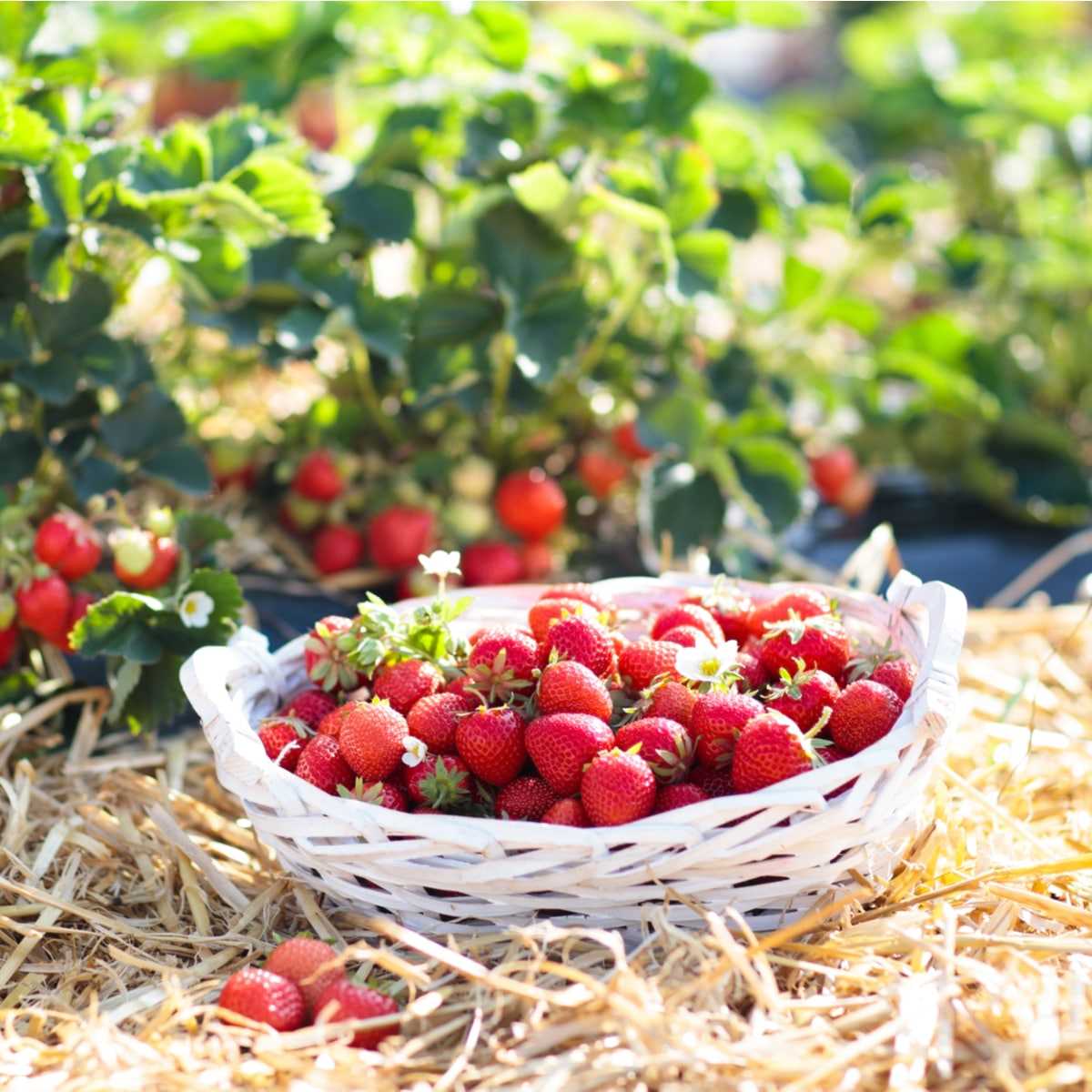
After removing the old leaves, it is essential to apply a balanced fertilizer to provide nutrients for the plants. A balanced fertilizer will contain nitrogen, phosphorus, and potassium, along with other essential micronutrients. Follow the manufacturer’s instructions for application rates and methods.
3. Water Regularly
Watering is crucial after the harvest to help the strawberry plants recover and establish new roots. Ensure that the soil remains moist but not waterlogged. Regular watering will help the plants absorb the nutrients from the fertilizer and promote healthy growth.
4. Mulch the Plants
Adding a layer of mulch around the strawberry plants will help conserve soil moisture and suppress weed growth. Organic mulches, such as straw or wood chips, are ideal for strawberries. Mulching will also help regulate soil temperature and protect the plants from extreme temperature fluctuations.
5. Monitor and Treat Pests and Diseases
Even after the harvest, strawberries can still be susceptible to pests and diseases. It is essential to regularly monitor the plants for signs of infestation or disease and take appropriate action. Organic pest control methods, such as introducing beneficial insects or using natural sprays, can be effective in managing pests.
6. Provide Adequate Sunlight

Ensure that the strawberry plants receive adequate sunlight, as this is crucial for their growth and fruit production. Make sure they are not shaded by other plants or structures that could hinder their access to sunlight. Prune any overhanging branches or plants that may block the sunlight.
7. Plan for Next Season
After the harvest, it is never too early to start planning for the next growing season. Consider rotating your strawberry plants to a different location in your garden to prevent the build-up of pests and diseases in the soil. You can also take this time to order new plants or prepare the soil for the next planting.
By following these feeding tips after the harvest, you can ensure that your strawberry plants remain healthy and productive for years to come.
Question-answer:
When is the best time to feed strawberry plants?
The best time to feed strawberry plants is before flowering and after harvest. Feeding before flowering helps promote healthy growth and maximize fruit production, while feeding after harvest replenishes nutrients that were used during the growing season.
What should I feed my strawberry plants with before flowering?
Before flowering, it is recommended to feed strawberry plants with a balanced fertilizer that is high in nitrogen. This will provide the plants with the nutrients they need to grow healthy foliage and develop strong flower buds.
What type of fertilizer should I use to feed my strawberry plants?
For feeding strawberry plants, it is best to use a balanced fertilizer that contains equal amounts of nitrogen, phosphorus, and potassium. This will provide the plants with all the essential nutrients they need for healthy growth and fruit production.
How often should I feed my strawberry plants after harvest?
After harvest, strawberry plants should be fed once every 2-4 weeks. This will provide them with the necessary nutrients to replenish what was used during the growing season and promote good root development for the following year’s crop.
Can I use organic fertilizers to feed my strawberry plants?
Yes, you can definitely use organic fertilizers to feed your strawberry plants. Organic fertilizers, such as compost or well-rotted manure, provide a slow release of nutrients and improve the soil structure. This can help promote healthy growth and increase the overall productivity of your strawberry plants.
What are the benefits of feeding strawberry plants after harvest?
Feeding strawberry plants after harvest helps replenish nutrients that were depleted during the growing season. This can improve the overall health of the plants and prepare them for the next growing cycle. Additionally, proper feeding can result in increased fruit production and better quality strawberries.







